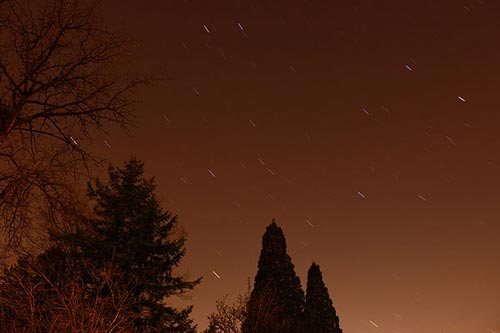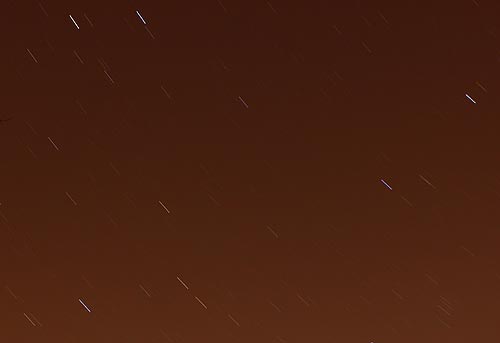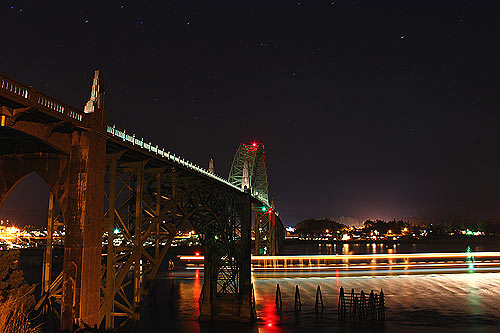Oregon Astronomer Reveals Tricks of Star Streaks
Published 01/14/2011

(Portland, Oregon) - It is the dead of night in the first few days of January, 2011. It's freezing in these wee hours, as no cloud cover is allowing things to remain even chillier by letting any hint of warm air dissipate upwards.
It means the stars are out in full force, creating a stir throughout much of Oregon. So you endeavor to photograph these stellar delights from a frozen patch of ground in Washington County, right on the border between Portland and Beaverton. And the colors are startling and surreal.
First, the sky is an unusual orange, like raging fire is inhabiting the sky – at least that’s what appears on your fancy little Cannon T1. Then, because you’re having to use two-minute-long exposures or longer to register this scene, the stars don’t stay in one place: they create star streaks.
That’s no surprise. Although one reader of OregonTravelDaily.com wonders if this is the Quadrantids meteor shower, which peaked on January 3. Nope. It is simply the result of long exposures.

But what is surprising is the different colors of these streaks (seen in the detail shot above). Some are whitish, some blue, some reddish or orange. Could this be the famed Doppler effect - used by astronomers to tell if something is moving away or towards the Earth? A shift in a color of a star is called the Doppler Shift, and it tells an astronomer if the heavenly object is coming towards or wandering away from us.
Is it possible to see this effect from a mere digital SLR camera?
Jim Todd, planetarium manager with Oregon Museum of Science and Industry (OMSI), said this is a trick of the eye – the mechanical eye, that is. Those different colors are the result of something other than a human eye looking at the sky.
It’s an atmospheric effect, actually.
“When seeing photos of stars, star trails, or other night images, people are often surprised by the unreal - or surreal – colors,” Todd said. “They often think these photos are either fake or manipulated. While that could be the case, what most people don't understand about light is that the human eye doesn't discern between the chemical compounds that make up light. Humans view a very narrow spectrum. Cameras, on the other hand, can pick up light wavelengths that is composed of chemical compounds like helium, hydrogen, and so on. These chemicals change the ‘color’ of light that that we can't easily see, but cameras can.”
In other words, it’s a combination of the camera picking up things we humans can’t and the gasses in the atmosphere tainting those streaks with funky colors.

Star streaks are the result of the Earth moving. In order to capture a night scene – indeed even a hint of stars – you have to have the camera shutter open for quite a while. Another example is this minute-long exposure taken on the central Oregon coast, of Newport’s Yaquina Bay.
“The first rule of thumb to remember is that the Earth rotates such that the light from a star begins to ‘move’ after about 15 seconds,” Todd said. “It's apparent movement is largely dependent on your lens: the longer the focal length, the more apparent the movement; the wider angle lenses won't show much movement till later because of the star point is so small.”
|